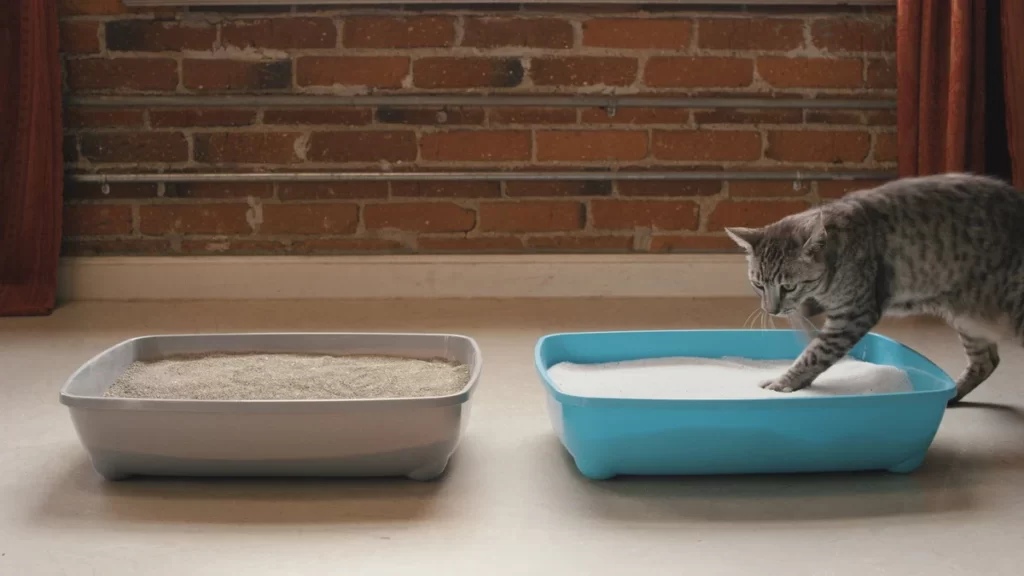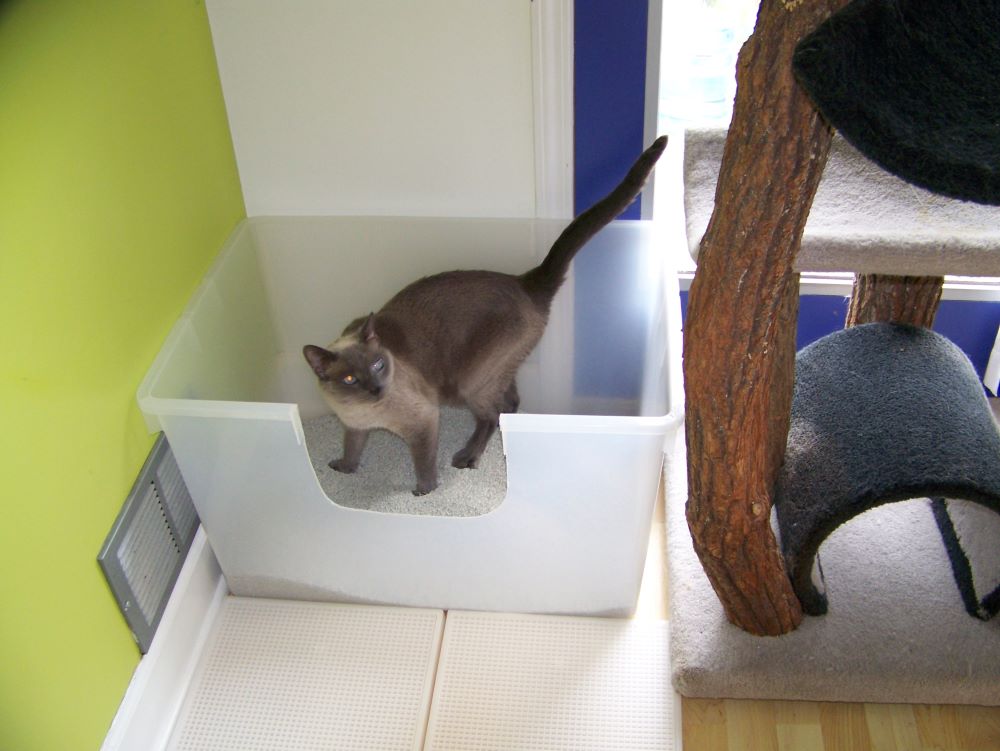How to transition a Cat to a new Litter Box location

Failing to successfully transition a cat to a new litter box location? Read this article to solve your dilemma.
Cats are creatures of habit and routine, so changing the location of their litter box can cause some stress and confusion. Change is a part of life however, and there may be several reasons why you need to move your cat’s litter box, such as rearranging furniture or moving houses. Whatever the reason, with careful planning and patience, the transition of a cat to its new litter box location can be made smoothly.
Reasons for Moving Your Cat’s Litter Box
There are several reasons why you might want to move your cat’s litter box. Listed below are some of the most common.
- Litter tracking. If your cat is spreading litter all over the house, moving the litter box to a different location may solve the problem (where they are less likely to spill it).
- Space constraints. If your current litter box takes up too much space, you may want to consider moving it to a more convenient location.
- Moving to a new residence. Changing your place of residence (either temporarily or permanently) means changing your cat’s litter box location too.
- Allergies or sensitivities. If someone in the household has allergies or sensitivities to litter dust, you may need to move the litter box to a location where it’s less likely to cause problems.
- Keeping the litter box clean. If the current location of the litter box makes it difficult to clean, moving it to a more accessible location may help.

Picking a Suitable Location for the New Litter Box
When choosing a new location for your cat’s litter box, keep the following in mind:
- Privacy: Cats prefer a quiet and private place to do their business. If the new location is too noisy or exposed, your cat may not feel comfortable using it. A quiet corner of your house would be an ideal spot for most cats.
- Accessibility: Make sure the new litter box is easily accessible to your cat. If it’s difficult to get to, your cat may avoid using it. Older cats will prefer a litter box with low walls to easily climb into.
- Cleanliness: Choose a location that’s easy to clean and keep sanitary. This is for the benefit of both you, and your cat. Cats are also very sensitive to an unclean environment (just like humans).
How to Move the Cat’s Litter Box
Once you’ve picked a suitable location for the new litter box, it’s time to start the transition process. Here’s what to do:
1. Gradual Transition
The best way to make the transition smoother is to gradually move the litter box to its new location. This can be done by moving it a little bit every day (a few inches) until it reaches its final destination. This allows your cat to get used to the change slowly.
2. Use a Similar Litter Box
For a smoother transition, try using a similar litter box in the new location. This will help your cat associate the new location with its old litter box, making it easier for them to adjust. This is only applicable if you plan on using a new litter box, instead of just moving the old one.
3. Keep the Old Litter Box Available
While you’re in the process of transitioning your cat to the new litter box, keep the old one available. This will give your cat the option of using either one, reducing stress and anxiety. Place the new litter box in the new location, while keeping the old one as it is. This allows the cat to become more familiar with the new location before you remove the old one.
4. Provide Positive Reinforcement
Whenever your cat uses the new litter box, provide positive reinforcement in the form of treats or praise. This will help your cat associate the new location with good things and encourage them to use it.
What to Do if Your Cat Refuses to Use the New Litter Box

If your cat refuses to use the new litter box, don’t panic. There are several things you can try to encourage your cat to use the new litter box location.
1. Go Back to the Old Litter Box for a Few Days
Sometimes, going back to the old litter box for a few days and then trying the transition process again can help. This gives your cat time to adjust and feel more comfortable with the change.
2. Make the New Litter Box More Appealing:
Try making the new litter box more appealing by adding new litter or a few catnip toys. Cats love clean litter, so make sure the new litter box is always clean and fresh. You can also start cleaning the old one less often, so it remains a bit dirty.
3. Train your cat to poop outside:
This may sound a bit unorthodox, but a good alternative is to simply train your cat to poop outside the house (e.g a corner spot in the garden). You can save money this way, and also save yourself from the hassle of cleaning the litter box.
4. Ensure you have the right amount of Litter
Chances are that you are using the wrong amount of litter in the new litter box. Cats are highly sensitive to such changes in their lives, and will easily refuse to use the litter box over such a minor issue. As a general rule of thumb, maintain about 2-3 inches of litter in the box (this may have to be increased based on the size of the cat).
5. Consult a Veterinarian:
If your cat continues to refuse to use the new litter box, it’s a good idea to consult a veterinarian. They can help you determine if there’s an underlying medical issue that needs to be addressed.
Final Thoughts
In conclusion, the transition of a cat to a new litter box location can be a bit of a challenge, but with patience and a few simple steps, it can be done successfully. Remember to gradually introduce the new location, provide positive reinforcement, and always be prepared to troubleshoot if your cat refuses to use the new litter box.
Don’t try and force your cat into something it is not comfortable with. If it refuses to use the new location, instead of repeating the same thing over and over again, try changing your approach each time. And if all else fails, you should do what’s best for your cat, and revert to the old location.


